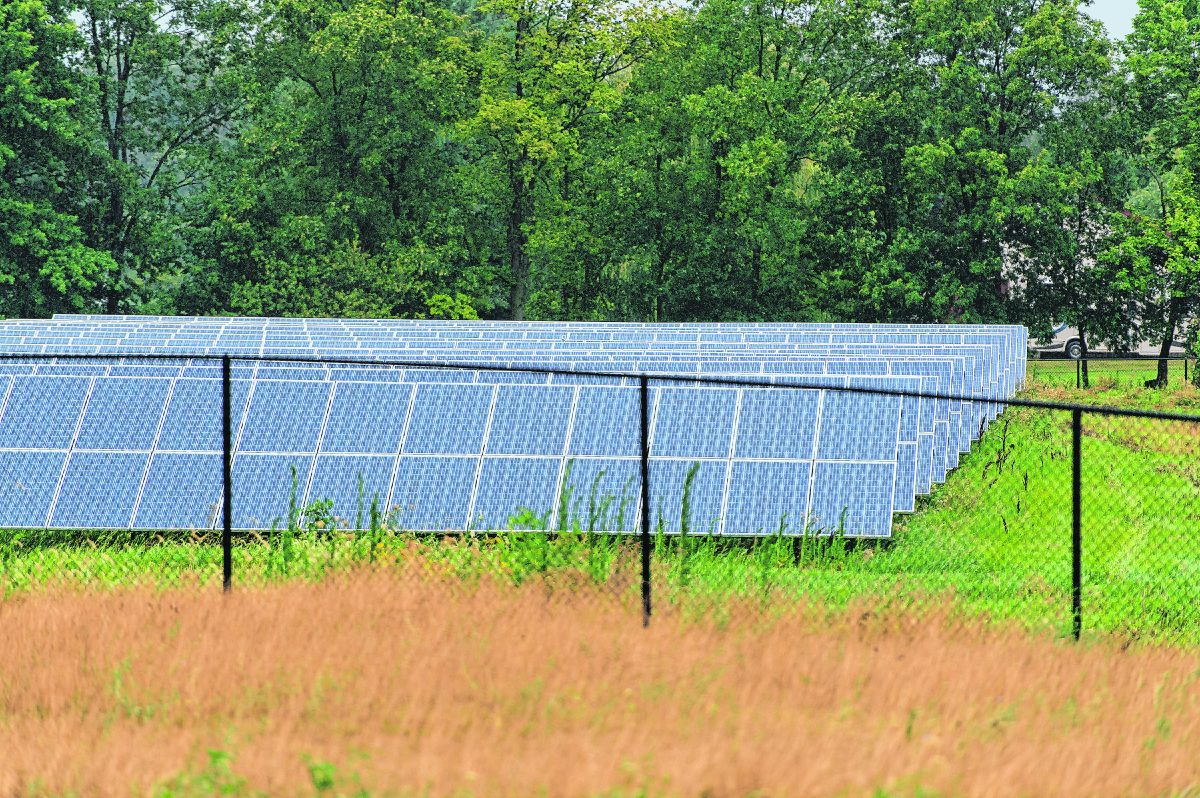Walnut Grove Elementary School, the newest school in Johnson County, stands just a few hundred feet away from six acres of solar panels.
The school is one of the only schools in Johnson County with solar panels, but schools throughout the county are looking at ways to save money on energy costs through renewable energy, including not only solar, but geothermal energy.
The solar panels at Walnut Grove are projected to bring in about 50 to 80 percent of the electricity needed to power the school, and are the first for Center Grove Community Schools. The district spent $367,600 on the panels, spokesperson Stacy Conrad said in an email.
[sc:text-divider text-divider-title=”Story continues below gallery” ]Click here to purchase photos from this gallery
Clark-Pleasant is also building a new elementary school that will have many of the same elements of Walnut Grove, down to the exterior design, the size of the building and solar panels. The district hasn’t finalized plans for the solar panels but has set aside about $600,000 for the cost and the installation. Whether they included, though, will depend on the overall school construction costs, spokesperson John Venter said.
If they are installed, the location of the panels at the new Clark-Pleasant elementary school, which doesn’t have a name yet, could be on the ground or even on the roof of the school, he said.
Clark-Pleasant schools has used geothermal energy for the past decade, which, combined with the potential for solar panels at the new elementary school, means the school could open using 70 percent renewable energy, Venter said.
“Geothermal uses liquid in pipes that go deep into the ground; it uses the ground’s natural ability to regulate temperature. That means in the winter it makes cold liquid warmer and it makes warm liquid cooler in the summer,” Venter said.
The 70 percent of energy that comes from geothermal and solar energy also means a 70 percent monthly utility cost savings for the new elementary school, he said.
Because the school has to integrate solar energy into a power source in order to use panels, it is easier when building a school rather than retrofitting an existing building. About half of Clark-Pleasant schools use geothermal energy, including the middle school, but retrofitting geothermal energy is only feasible when conducting a major renovation on a school, Venter said.
Center Grove also has geothermal energy at Center Grove Elementary School, at its alternative academy and its administration building, Conrad said.
The Indian Creek high school and middle school building uses solar power to heat its water. Solar panels and copper tubes on the roof convert sunlight into heat energy, which heats water an average of 100 degrees. Indian Creek Schools does not have any plans to use geothermal or add more solar panels, Facilities Director Jared Sneed said.
Franklin Community Schools is in the beginning stages of researching renewable energy options for its buildings, including the possibility of adding solar panels, and currently has an energy conservation program that began in 2013 and saved the district almost $2 million since 2013, Operations Director Jeff Sewell said.
To conserve energy under the program, maintenance and energy technician Jeff Bright walks through the buildings on weekends and holidays to make sure all the lights and monitors are turned off and the cords are unplugged. If he notices a light is left on, he’ll turn it off and leave a reminder sticker in the room. Bright will also look at event and meeting schedules and turn the heat or air conditioning off in buildings when they’re unoccupied, he said.
“Teachers and staff do a very good job of following protocol,” Bright said. “They’ve been really good at participating in the program.”
Greenwood Community Schools does not have any alternative energy programs and because of the limited amount of space schools in the district have to build around them, adding solar panels is highly unlikely. The district currently runs on electric and gas energy, Superintendent Kent DeKoninck said.
“We just haven’t approached that area at all,” DeKoninck said. “Certainly solar wouldn’t be a possibility with us being urban and there not being room for it.”





